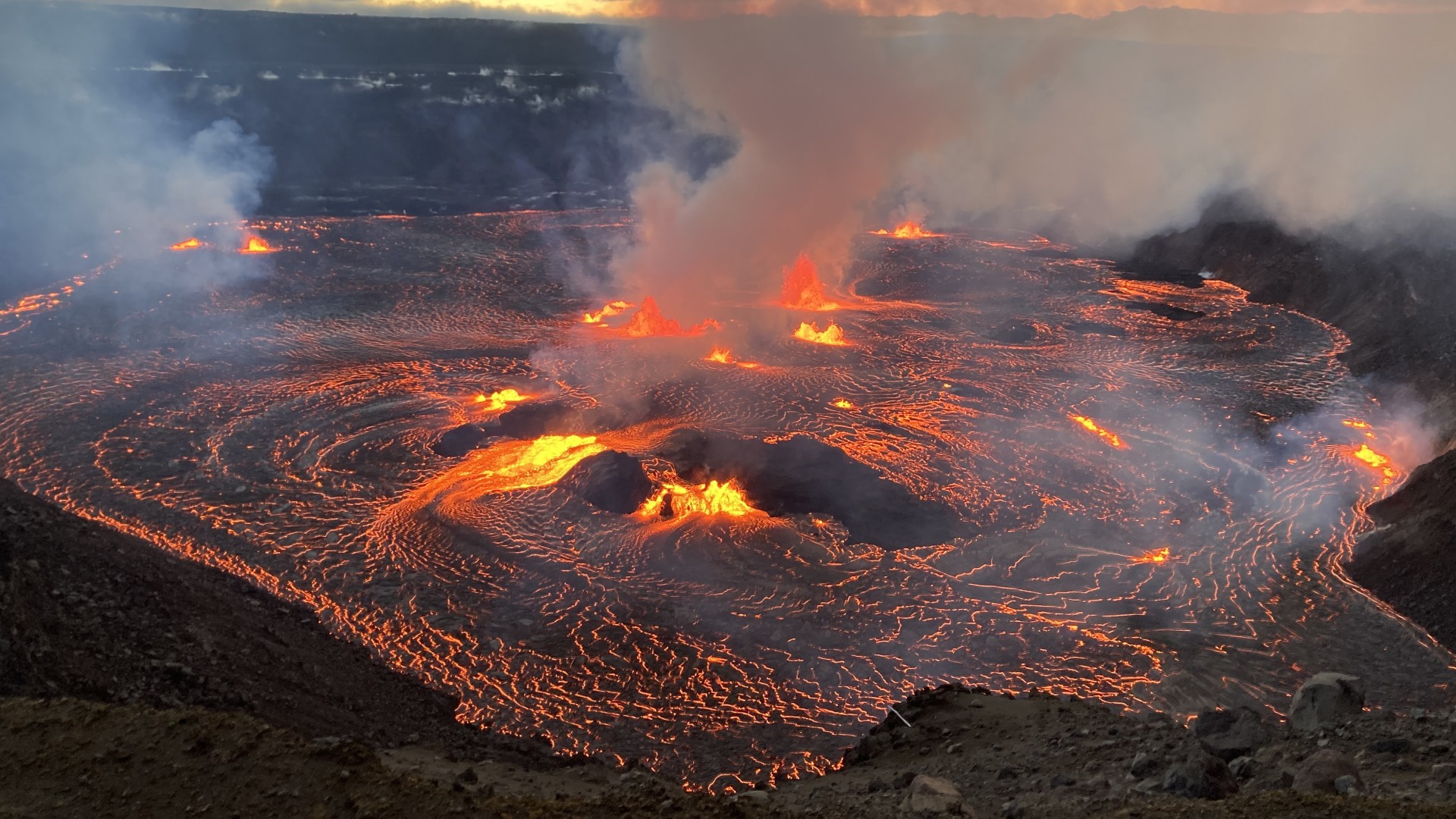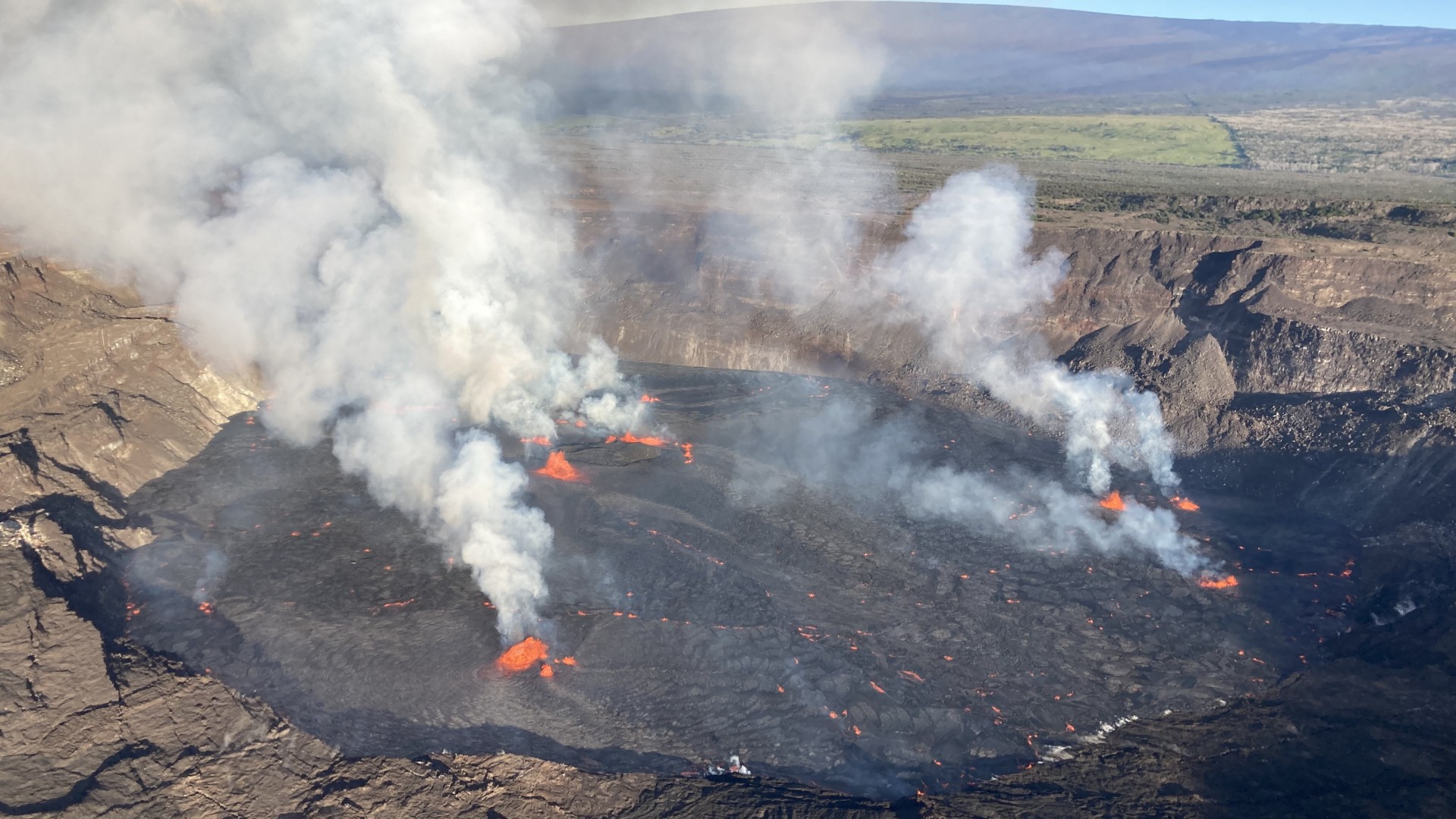
In a fiery and ongoing eruption, Hawaii's Kilauea volcano began spewing lava on June 7, sending molten rock to the surrounding crater and reaching temperatures as high as 2,100 degrees Fahrenheit (1,150 degrees Celsius), according to the U.S. Geological Survey (USGS).
Kilauea, located on Hawaii's Big Island, is one of the world's most active volcanoes, and has been erupting almost continuously since 1983. The USGS briefly deemed the eruption a code red, the highest risk alert level, but downgraded it to orange the next day "because the initial high effusion rates have declined, and no infrastructure is threatened," the USGS said in a June 8 statement, adding that the lava from the eruption is confined to the Halemaʻumaʻu pit crater within Kilauea's summit.
However, officials warned Wednesday (June 14) that high levels of volcanic smog, known as vog, from the eruption could travel downwind and potentially affect air quality. They added that the eruption may sprout off thin, sharp glass fibers called Pele's hair, named after Pele (PEH-leh), the Hawaiian goddess of fire and volcanoes. Resembling golden straws of hay, the strands are formed when gas bubbles in the lava pop at the surface and then cool into gossamer glass needles. If Pele's hair is blown downwind, it could irritate people's eyes and skin or contaminate drinking water.
Related: The 12 biggest volcanic eruptions in recorded history
"The skin of the bursting bubbles flies out, and some of the skin becomes stretched into these very long threads, sometime[s] as long as a couple of feet [0.6 meter] or so," Don Swanson, a former research geologist at the Hawaiian Volcano Observatory, told Live Science in 2018. "Imagine inhaling tiny slivers of glass. That's what the Pele's hair is. It can inflame and irritate anything that comes in contact with it."
On the first day of the eruption, extreme heat from the lava created wind vortices that sucked up ash and whipped chunks of lava across the Halemaʻumaʻu crater — an event that the The Weather Channel dubbed a "volcano-nado," but the USGS called a whirlwind or wind vortex. Kilauea's last eruption began in early January and lasted about three months.

"These volcanoes have to be busy to make these islands out in the middle of the Pacific and they certainly stay that way," Ken Hon, the scientist-in-charge at the USGS Hawaiian Volcano Observatory, told KHON2, a local news station in Hawaii. "Just like people have behavioral phases, our volcanoes have behavioral phases that they go in and out of."
One of Kilauea's most catastrophic eruptions occurred in 2018, when lava flowed like a river across residential areas of the Big Island and destroyed more than 700 homes over a fourth-month period, according to the National Park Service. Deemed a code red, the 2018 eruption occurred several hours after powerful earthquakes rattled the Big Island.
Scientists at the Hawaiian Volcano Observatory are continuing to provide daily updates on the current eruption at Kilauea.







